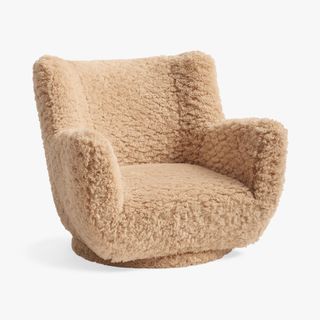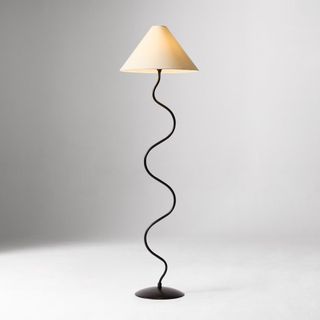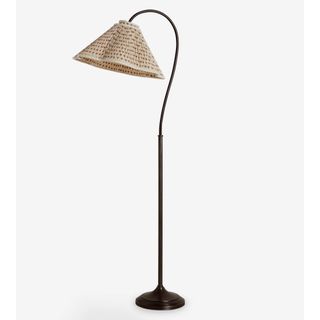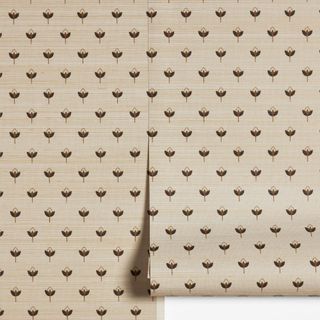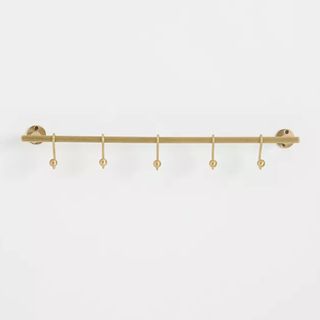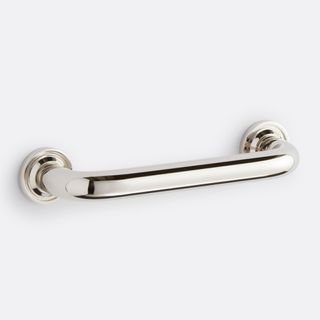12 must-know interior design trends that will be defining our homes in 2025
From color, pattern, and stone drenching to creating pockets of sanctuary, here's what 2025 has in store for interiors
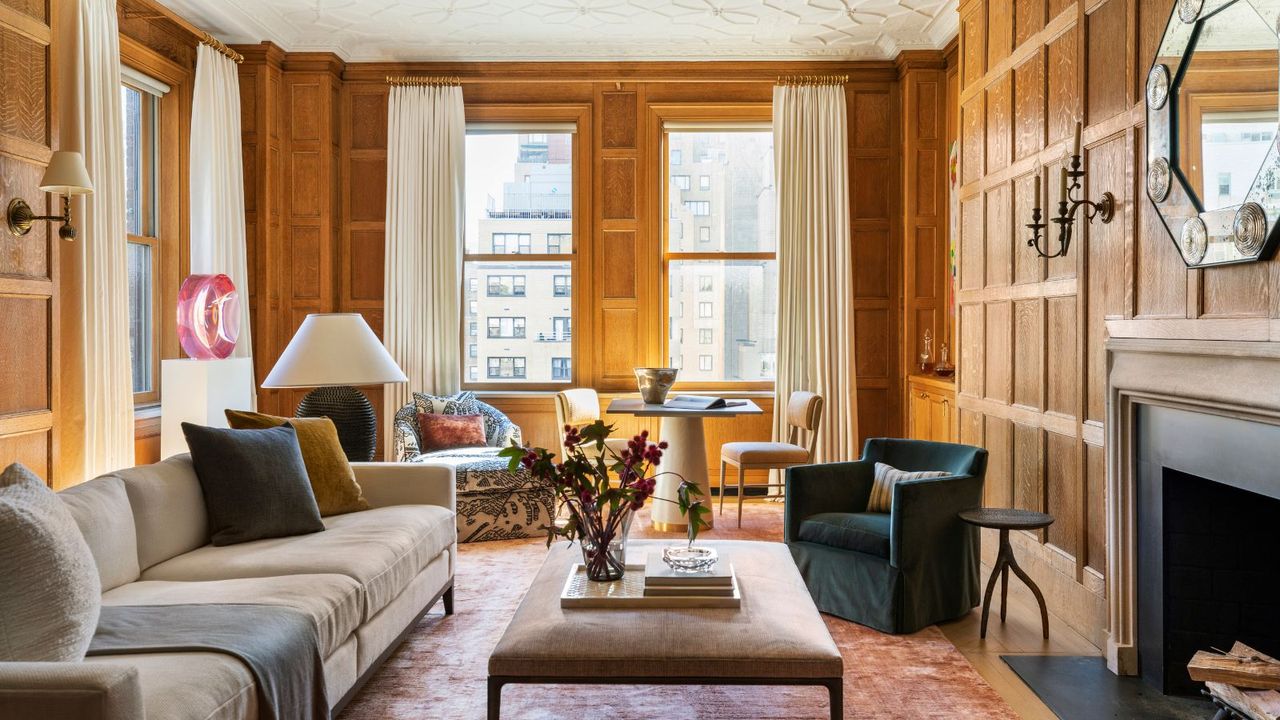
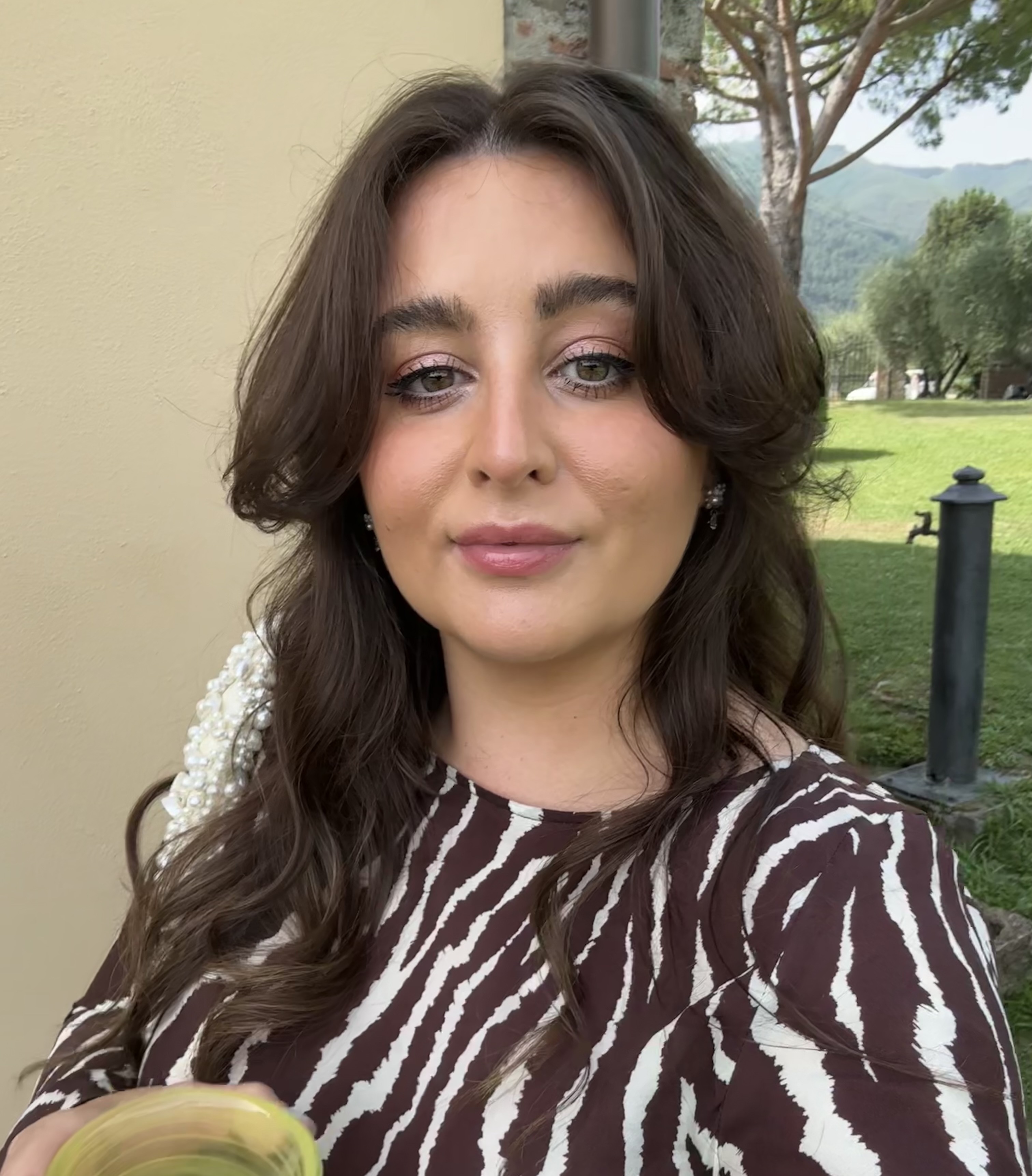
It is no big secret that interior design trends come and go, with something new taking root and inspiring us to make changes and tweaks to our homes each year. But while the majority are relatively short-lived, you may be interested to learn what the 'ins' and 'outs' are for the coming year.
While bookshelf wealth and the unexpected red theory dominated, 2024 was the year of the 'anti-trend', moving in favor of spaces filled with character and personality – reflecting a desire to just decorate with things you love. Which is certainly going to be an attitude that continues in 2025.
But what else does 2025 hold? We've asked top interior designers to consult their crystal balls and share the trends they are predicting will be huge this year. Here's what they had to say.
The top interior design trends to know in 2025
We cover everything from fabric trends and color trends to kitchen trends and bathroom trends in our round-up of the biggest interior design trends for 2025 and beyond.
1. Thoughtful design
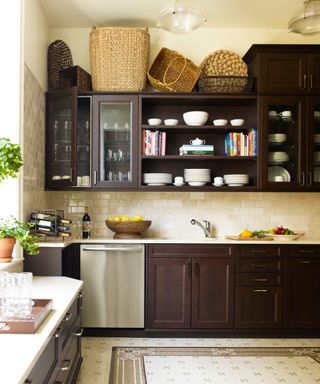
Interior designer Kathy Kuo is seeing a 'trend' in the demand for less trendy interiors for 2025. Hear us out.
'I think we're going to continue seeing a rise in conscious consumerism in the interiors realm; this means an emphasis on 'timeless style' rather than 'trendy' and a focus on sustainability and craftsmanship when it comes to interiors,' Kathy explains. 'With this intentionality, I think we'll see more and more custom upholstery in homes, as well as really special and bespoke decorative elements that have meaning and a personal story.'
Thoughtful, sustainable design is always on trend, but the thirst for decorating with antiques and more unique pieces will not only lead to us shopping more responsibly, but it will also see a rise in 'shopping small', and celebrating handmade designs and craftsmanship from all over the world.
Sign up to the Homes & Gardens newsletter
Design expertise in your inbox – from inspiring decorating ideas and beautiful celebrity homes to practical gardening advice and shopping round-ups.
Designer Becky Shea agrees. 'What I’d love to see more of in 2025 is designers embracing a greater sense of responsibility for the impact of their purchasing decisions and promoting a more sustainable approach to design. For me, this means sourcing second-hand, vintage, and antique pieces that carry history and character while reducing the demand for newly manufactured goods.'
2. Pockets of sanctuary
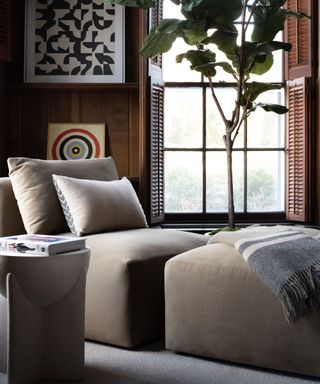
As life gets busier and busier and we demand even more from our homes, there is a growing trend for carving out spaces designed for relaxation.
Holistic design expert Gala Magriñá calls these spaces – like a cozy reading nook or a calming bedroom – 'pockets of sanctuary'. 'It’s already been a whirlwind year for many, and we are seeing a growing response of people rethinking their homes as true sanctuaries,' says Gala.
'We began this shift post-pandemic, but in the years ahead, homeowners are likely to approach design with even greater mindfulness, considering how every choice impacts their physical and mental well-being.
'This shift to holistic design is giving rise to 'pockets of sanctuary' within the home – personal retreats that may be as simple as a cozy armchair by a window or as intentional as a dedicated meditation room. Across the board, we’re seeing more holistic design choices featuring biophilic elements, natural and organic materials, and a focus on comfort that invites calm and relaxation throughout.'
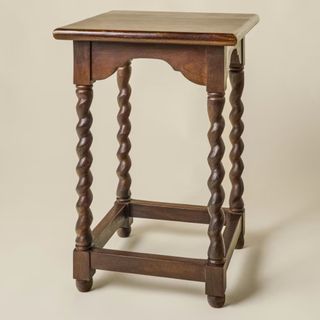
Vintage-inspired and incredibly elegant, this barley twist side table is perfect for resting down your book and glass of wine in a cozy spot.
3. Warm, retro color palettes
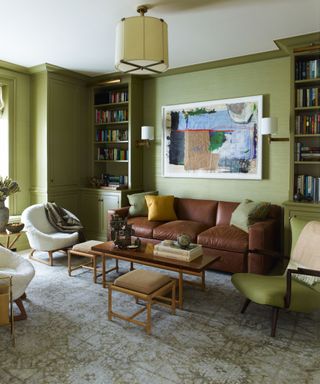
Color trends are taking a nostalgic route with the return of warm, retro color palettes that draw inspiration from the rich hues of the '70s and '80s. The resurgence of these vintage-inspired shades can be closely tied to a shift toward design that feels timeless and full of personality, rather than overly modern or minimal.
'I believe there will be a shift towards warm earth tone palettes,' says Gideon Mendelson, founder of Mendelson Group. 'Shades like terracotta, mustard, and rich greens, complemented by natural materials such as wood and stone, create an inviting, grounded atmosphere that fosters a deeper connection with nature.'
'Similar to warm tones, I think we'll see more and more shades of brown grow in popularity – as seen in Pantone’s color of the year: Mocha Mousse,' he continues. 'With the yearning for nature and the retro 70's revival, I could see colors like rich rust, warm clay, and burnt umber become more prevalent. I think they provide an earthy, grounded aesthetic and have an enduring quality that makes it feel timeless.'
4. Accent ceilings
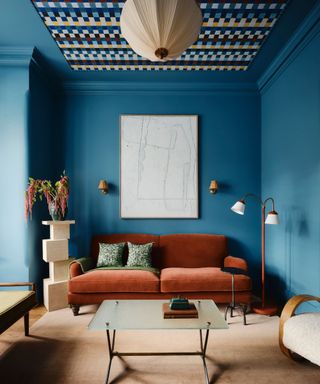
'As color drenching gained popularity in 2024, extending bold creativity to ceilings is the next logical step,' says designer Portia Fox. 'In 2025 designers are set to embrace the ceiling as a "fifth wall," where elements like hand-painted murals, sculptural ceiling roses, and deep cornices can elevate the entire room's aesthetic.'
'This trend also aligns with the growing focus on personalization in design,' she continues. 'Clients typically seek curated and unique spaces, and elaborate ceiling treatments allow for self-expression.'
Alicia Meireles, creative director at OWN LONDON agrees. In this project, seen above, they created a dramatic feature by adding framed wallpaper to the ceiling in the family snug 'because it’s a moody, cozy space'. 'A feature wall would have felt too busy alongside the TV joinery, so the ceiling became an opportunity to be more playful,' Alicia explains.
Whether it’s a bold color choice, intricate wallpaper, or decorative molding, accent ceilings are already big news for 2025.
5. Pattern drenching

The savviest of design trend followers will already know that the new drenching trend making waves in 2025 is the pattern drenching trend. Taking color and print from floor to ceiling, and across all surfaces, this is one of the most maximalist ways to create a space that feels both exciting and unified.
'A trend we would love to see continue in 2025 would be using the same pattern on different applications throughout a room,' says interior designer Wendy Labrum who designed the cozy, stripe drenched space seen above. 'Coordinating a pattern on both the walls and key upholstery pieces can help the room have a moment, per se, and brings undeniable character.'
Whether it’s florals, stripes, or subtle intricate designs, when done thoughtfully pattern drenching lets you make a sure statement and add energy to any room of your home.
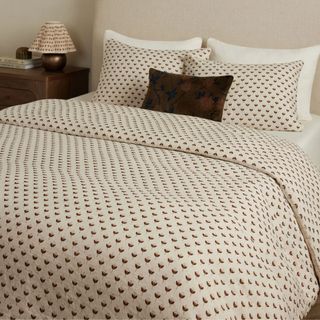
Made from 100% linen, which will only get softer over time, this duvet set brings a pretty and subtle pop of pattern to your bedroom.
6. Indoor swings
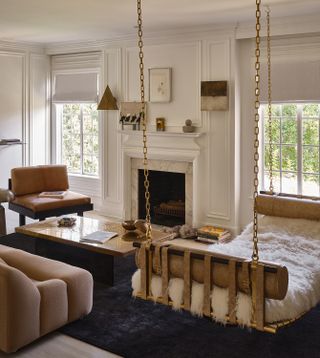
Gwyneth Paltrow has one. The iconic interior designer Brigette Romanek has one (having installed the one in Gwyneth’s). Beyonce sat in a Lee Broom one for a music video. Designers have been adding indoor swings into projects with increasing regularity, and they’ve been spotted hanging out in some of the most beautiful new homes of the year.
Why? Quite simply, because they’re fun, a joyous addition that can lift your spirits as they lift you off the floor.
‘They help you to relax,’ says Brigette Romanek, her own living room pictured above. ‘They put a smile on your face. To me, they’re another form of wellness, able to put you into a trance. Close those eyes and sway. Gwyneth Paltrow has had one for years and always loved them – you can’t beat swinging in front of that view.’
7. Pairing curves with waved edges
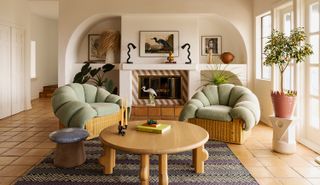
Bringing a sense of intrigue and movement into our spaces, furniture trends are sitting on the side of curves this year.
While this is nothing new – designers have been making a beeline for curved edges for the past few years – scalloped and wavy shapes are rising up through the trends. But pairing the two together, as seen here in this living room by the Malibu-based studio LALA Reimagined, amplifies the effect. The curved arches guide the eye towards the wavy lamps, softening all the hard corners.
'We’re motivated by what doesn’t fit into a box, and waves just simply don’t,' says Lia McNairy, one of LALA Reimagined's co-founders. 'They create a fluidity of movement, they take a space out of the rigid mode of everything being on an angle.'
8. Mixed metals

'Mixed metals will be a hit in bathrooms and beyond in 2025,' says interior designer, Joshua Smith.
'There are lots of opportunities to use a mixed metal light fixture to harmoniously combine brass and black or bronze, or even brass and nickel. There are so many accessible options to choose from, making it easier to find the perfect balance of finishes you need by mixing and matching certain parts. We’ll also see powder-coated metals in brighter colors become mainstream.'
Mixing metals is often a key feature of industrial decor, but it can be done more subtly too, as shown by the contrasting mixed metals used across the fixtures and fittings in this elegant, neutral bathroom.
Interior designer, Peak Petersen, also adds, 'Aluminum in lighting and furniture is reemerging from the ’80s for 2025 interior design trends, which I love; used sparingly and elegantly, this metal can make a space feel wonderfully chic and elevated.'

Available in 3 different finishes, these playful star knobs come in a pack of 2 to rejuvenate your cabinetry with a fun new shape.
9. Copper comeback
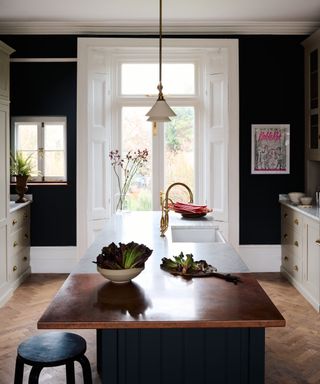
Speaking of metal, it's almost impossible to believe that copper is back in favor of kitchen hardware trends – after 15 years of brass being used instead. But doesn't its warm hue and sunny tone feel exactly right for now?
'I’m very into copper verdigris, and the way it patinas,' says the designer Tom Morris of Morrisstudio. 'I’m currently doing a kitchen and using a copper worktop, whereas two years ago I was erring more towards stainless steel. We’ve come full circle and are using warm metals again, as well as warm colors. Even brass can feel a bit too brash.'
Similarly to unlacquered brass, copper takes on a beautiful lived-in finish over time that patinas and works wonderfully in vintage kitchens as a worktop, like the above space designed by deVOL, or hardware.
10. Moodier colors

Darker colors have always been considered very elegant and chic, but there's been an inaccessibility to them too. You need to have the right style, the right space, and the right lighting to pull off moodier shades.
And for that reason, a lot of us have shied away from using shades like black, brown, dark blues, purples, and greens. But 2025 looks to be the year we realize how easy to incorporate darker colors can be, especially when looking at warmer tones.
'We’ve been moving even moodier in the colors we're going for,' says the Washington, D.C.-based designer Zoe Feldman. 'Since Covid, there has been a shift into warmer spaces, and now as we look to 2025 we’re all feeling very moody with everything going on in the world. I love deep greens, curry tones, and lots of terracottas. There's a richness that you get from these tones that we're all craving so much right now.'
11. Biophilic design
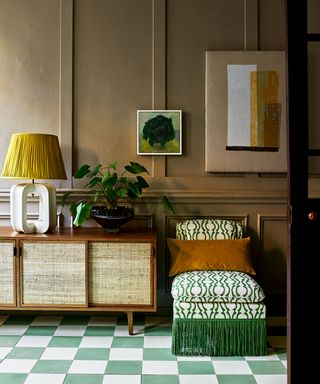
'Biophilic design continues to thrive in 2025. This trend centers around bringing the outdoors inside, creating spaces that foster a stronger connection with nature. Expect to see more indoor plants, living green walls, natural materials like stone and wood, and large windows to maximize natural light, reducing the barrier between the interior and exterior,' says Ginger Curtis, founder and CEO of Urbanology Designs.
It's fair to say, that one of the biggest inspirations for many when it comes to interior design is the beauty of the natural world. From color palettes rooted in nature to the warmth of wood and the durability of natural stone, establishing an indoor-outdoor feel in the home can be both calming and relaxed and uplifting and energizing simultaneously.
Chris Pask, director at Charlton Brown also adds, 'Clients are increasingly looking for a greater connection to the outdoors in their homes, whether that is a literal connection via roof terraces, balconies and beautifully landscaped gardens, or more subtle nods to greenery and nature throughout the home. This can take the form of colors, materials, and shapes that mimic those found in nature and are known to invoke a sense of calm.'
12. Statement stoneware
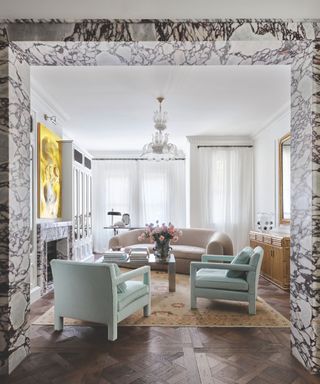
From kitchens to bathrooms, another 'drenching' trend to keep on your radar this year is stone drenching.
The beauty of natural materials such as travertine and decorating with marble is undeniably timeless. Most commonly used for bathroom ideas and kitchen ideas, 2025 will see statement stoneware used across the home, from sculptural stone side tables in a bedroom to a stand-out marble fireplace in a living room.
Interior designer, Devon Wegman, founder of Devon Grace Interiors says, 'While I never thought I would put granite on a project, we've been slowly using it more and more as we see slabs that have incredible movement and veining and look almost like quartzite. In fact, the conference table in our design studio is made up of two bookmatched slabs of granite with bold white veins running through it.'
We do predict that 2025 trends will see more of what we have seen in 2024, less quick seasonal or pop culture lead trends and more looking back for inspiration. The 'trends' we all love are becoming more and more timeless as the years go on as people move away from the constant need to change interiors to keep them 'trendy' and rather decorate with longevity in mind.

Charlotte is the style and trends editor at Homes and Gardens and has been with the team since Christmas 2023. Following a 5 year career in Fashion, she has worked at many women's glossy magazines including Grazia, Stylist, and Hello!, and as Interiors Editor for British heritage department store Liberty. Her role at H&G fuses her love of style with her passion for interior design, and she is currently undergoing her second home renovation - you can follow her journey over on @olbyhome
- Zara StaceyContent Editor
- Jennifer EbertEditor
- Hebe HattonHead of Interiors
- Pip Rich
You must confirm your public display name before commenting
Please logout and then login again, you will then be prompted to enter your display name.
-
 5 things people with clean home storage always do to protect belongings, curb hidden mold, and prevent pests
5 things people with clean home storage always do to protect belongings, curb hidden mold, and prevent pestsIt's a simple addition to your routine for cleaner and nicer-smelling storage areas
By Chiana Dickson Published
-
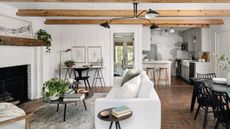 Joanna Gaines' Hillcrest Cottage is a lesson in making the most out of a small space – take a tour to see how she brings her iconic style to this tiny rental property
Joanna Gaines' Hillcrest Cottage is a lesson in making the most out of a small space – take a tour to see how she brings her iconic style to this tiny rental propertyCombining her signature rustic style with a contemporary palette, Joanna makes this tiny cottage feel bright and airy
By Eleanor Richardson Published
